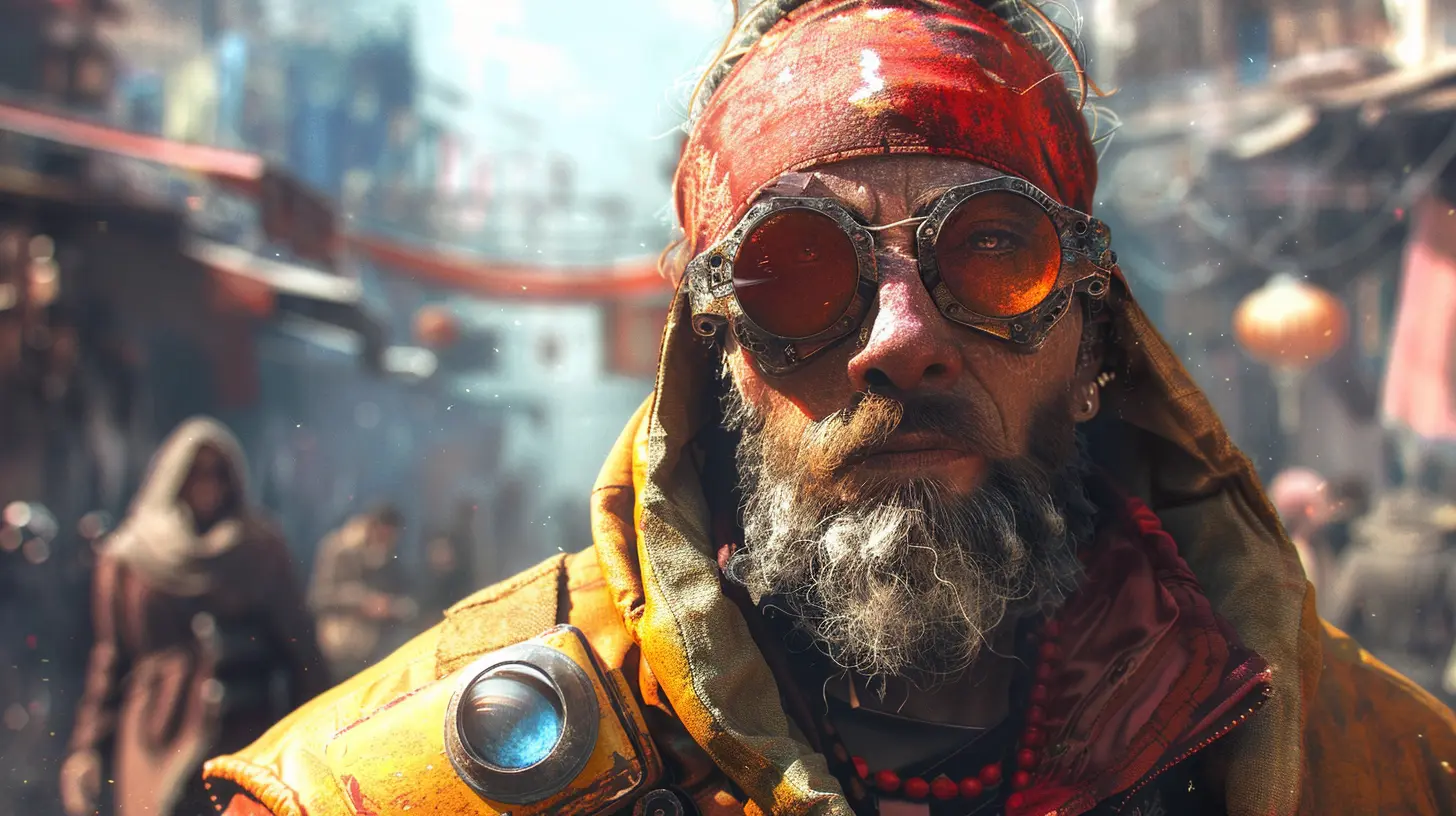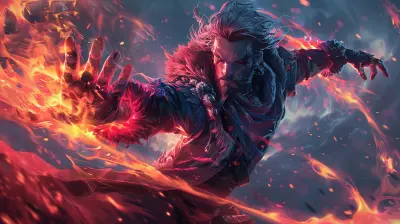How Customization Options Influence Player Behavior in Games
4 November 2025
Let’s be real here: there’s something magical about logging into your favorite game and spending way too much time tweaking the tiniest details of your character. Whether it’s choosing the perfect shade of green for your elf’s hair or deciding if your space warrior should rock a mohawk or a mullet, customization options can get addictive. But here’s the thing—there’s actually a lot more going on behind the scenes when it comes to customization in games than just letting you dress up your character like it’s Halloween every day.
Customization options don’t just make games more enjoyable; they have some serious psychological, social, and even strategic effects on how players engage with the virtual world. So, grab a snack, set your character’s sliders to max, and let’s dive into how these seemingly simple options influence player behavior. 
The Freedom to Be You (Or Someone Totally Different)
Gaming is one of the rare spaces where you can be, well, whoever—or whatever—you want. Want to play as a seven-foot-tall, neon-pink ogre wearing a tuxedo? Go for it. Prefer to recreate yourself with impossibly perfect cheekbones and a jawline so sharp it could cut steel? Why not. Customization lets players experiment with identity in ways that real life just doesn’t allow.This freedom does more than just make the game fun. It gives players a personal stake in the game world. When you can mold a character into your ideal virtual self—whether it’s a spitting image of you IRL or something completely out of left field—you’re more likely to feel attached to that character. And when you’re attached, guess what? You spend more time playing. It’s like decorating your own house; once it feels like yours, you want to hang out there. 
The Psychology of Ownership
There’s this neat little psychological concept called the “endowment effect.” Sounds fancy, but it basically means you tend to overvalue things you feel ownership over. Customizing your character—or even your gear, weapons, or home base in a game—creates exactly that sense of ownership.Take games like Animal Crossing or The Sims. People spend hours—HOURS—arranging furniture, picking wallpaper patterns, and fussing over whether the rug ties the room together. Why? Because the more effort you put into customization, the more you feel that thing is yours. And when something feels like it belongs to you, you’re more invested in it.
In games, this translates to players sticking around longer, grinding for better customization options, or even shelling out real-world cash for premium cosmetic items. (I mean, who hasn’t spent $5 on a digital hat and then immediately regretted it?) 
Your Style = Your Playstyle
Customization doesn’t just change how your character looks—it often changes how you play. If you spend hours designing a sleek, high-tech assassin in a game like Cyberpunk 2077, you’re probably not going to start blasting through missions like a loud, clunky berserker. Your choice of style influences your mindset.It’s like when you dress up for a fancy occasion IRL. Throwing on a tux or a ball gown makes you walk differently, maybe hold your head a little higher, right? The same thing happens in games. You’re not just picking colors and hairstyles; you’re setting the tone for how you approach the game world.
But it’s not all about appearances. Gear customization also plays a role in setting up strategies. For example, in Call of Duty, you’re not just slapping random attachments onto your gun for kicks. Every scope, grip, or suppressor changes how you approach a match. What starts as aesthetics often snowballs into full-on tactical decisions. 
Social Butterfly Effect: What Does Your Character Say About You?
Let’s face it—most of us want to look good, even in a virtual world. Whether it’s flexing the rarest armor set in World of Warcraft or showing off your impeccably designed island in Animal Crossing, customization becomes a way to communicate with other players.It’s like a digital version of choosing your outfit before a party. Are you trying to look cool? Funny? Intimidating? Your choices say something about you, even in a game.
And don’t even get me started on games with emotes and dances. (Cough Fortnite cough.) People use these things as a form of self-expression, connecting with others, and sometimes just straight-up trolling. Whatever the motive, customization makes interactions with other players more vibrant and personal.
Customization and the FOMO Factor
You know what makes players foam at the mouth like rabid wolves? Rare and limited-time-only customization options. Whether it’s a seasonal event skin in Overwatch or some shiny new weapon charm in Valorant, game developers know exactly how to tap into players’ fear of missing out (FOMO).This isn’t just clever marketing; it actually influences behavior. Suddenly, players are diving into events they’d normally ignore or grinding for hours just to unlock the latest cosmetic reward. Customization drives engagement like nothing else. It’s like Black Friday, but instead of flat-screen TVs, you’re racing to snag a sparkly purple sword that you’ll probably only use for a week—but hey, it looks amazing in screenshots.
Monetization Meets Customization
Alright, we’ve gotta talk about the elephant in the room: microtransactions. Love them or hate them, they’re here to stay, and customization is often the star of the show. From Fortnite’s endless rotation of skins to Apex Legends’ fancy weapon heirlooms, players are shelling out cash for virtual swag.Now, I get it. Spending real money on costumes for a digital character might sound insane to non-gamers. But for gamers, it’s more than just pixels. Customization is about expressing yourself—and sometimes, it’s worth paying a few bucks to stand out from the crowd (or, let’s be honest, to flex a little).
But here’s the sneaky part: game developers know this. They design customization options not just to look good, but to trigger your need to buy. Limited-time offers, flashy animations, and that little notification in the corner reminding you that there’s a sale? All calculated to make you give in.
Customization as a Storytelling Tool
Ever notice how customization often ties into a game’s narrative? It’s not just about making your character look cool; it’s about feeling like you belong in the story.Take Mass Effect, for instance. Sure, you can play as the default “bro Shepard,” but customizing your Commander Shepard—down to their hairstyle and jawline—makes the game’s choices feel more personal. This is YOUR Shepard making those life-or-death decisions, not some generic hero.
Games like Skyrim and Fallout take this even further, offering insane levels of customization not just for your character, but for how you interact with the world. Want to roleplay as a sneaky thief or a battle-hardened warrior? Your customization choices help define who your character is and how they fit into the game's universe.
When Customization Goes Off the Rails
Of course, not all customization is created equal. Sometimes, it can lead to absolutely hilarious (or horrifying) outcomes.Anyone who’s ever played The Sims knows exactly what I’m talking about. Spend too much time dragging those facial feature sliders around, and suddenly your character looks like they’ve been hit by a bus. And don’t even get me started on the outrageous outfits people come up with—giant hotdog suit, anyone?
While these moments are funny, they also highlight just how far players will go to create something unique. Even if it’s weird, wonky, or borderline terrifying, people love putting their personal stamp on things.
Conclusion
At the end of the day, customization in games is way more than just a sprinkle of glitter on top of the gameplay sundae. It taps into our sense of identity, psychology, and need for self-expression. It influences how we play, how we interact with others, and even how much time (and money) we sink into a game.So, the next time you spend three hours tweaking your character’s eyebrows in Elden Ring, don’t feel bad. You’re not just wasting time—you’re participating in one of the most fascinating aspects of modern gaming. Plus, hey, at least your character’s eyebrows will be on fleek.
all images in this post were generated using AI tools
Category:
Character CustomizationAuthor:

Tayla Warner
Discussion
rate this article
1 comments
Aubrey McGarvey
Customization enhances player engagement, allowing personal expression and deeper emotional investment in the game experience.
November 5, 2025 at 4:33 PM


